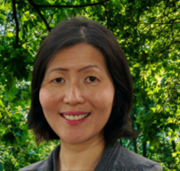“I can be a scientist!”
Posted on February 9, 2022 in Insights

Storybook can be a powerful tool in building children’s identity. Read the blog post and learn more!
Do you know that the traffic lights were invented by a Black inventor, Garrett Morgan? I learned this and about many more Black scientists and inventors from a children’s book by Patrice McLaurin, Have you thanked an inventor today?
Reading and discussing books that include diverse and positive representations of characters could help children find resemblances to the characters with similar backgrounds and see them as role models (Golos & Moses, 2011). Dr. Rudine Sims Bishop, a professor and author coined the phrase “Windows, Mirrors and Sliding Glass Doors” to explain how critical it is for children to see themselves in the books that they read, and how they can also learn about or step into the lives of others through books. This is important for all children, especially Black or Brown children with and without disabilities, who frequently do not see themselves in children’s literature.
Storybooks can be a powerful tool in supporting children’s STEM learning and building their STEM identity and provide access to STEM learning opportunities. Access in STEM education is an ongoing challenge. Based on data from the U.S. Department of Education, Office of Civil Rights Data Collection (2018), we know that Black high schoolers are underrepresented in more advanced science and math courses, and similarly in science and engineering degree programs, and within the STEM workforce (National Science Board, 2022).
But we as an early childhood field can change this trajectory right from the start by supporting Black children to build a positive STEM identity and a strong sense of belonging in STEM (Master et al., 2017). We have curated a list of books focused on Black pioneers and innovators in STEM or have Black characters that can offer the mirrors, windows, and sliding glass doors for the children we work with: . https://stemie.fpg.unc.edu/resource/curated-booklist-celebrating-black-stem/. We have also created storybook conversation tip sheets for a few of the books from the list: Astro Girl (https://stemielearningtrajectories.fpg.unc.edu/activity/storybook-conversations-astro-girl/), The Snowy Day (https://stemielearningtrajectories.fpg.unc.edu/activity/storybook-conversations-the-snowy-day/).
Later this month, we have a guest blogger who is an early childhood faculty and a proud mama of a 5-year old. She will share her personal experiences on how representation is so critical for her child when it comes to engaging him in books and STEM.
If you are interested in Dr. Rudine Sims Bishop’s essay, it is available here: https://www.readingrockets.org/sites/default/files/Mirrors-Windows-and-Sliding-Glass-Doors.pdf

UNC's FPG Child Development Institute and Co-director of the STEM Innovation for Inclusion in Early Education Center (STEMIE).


